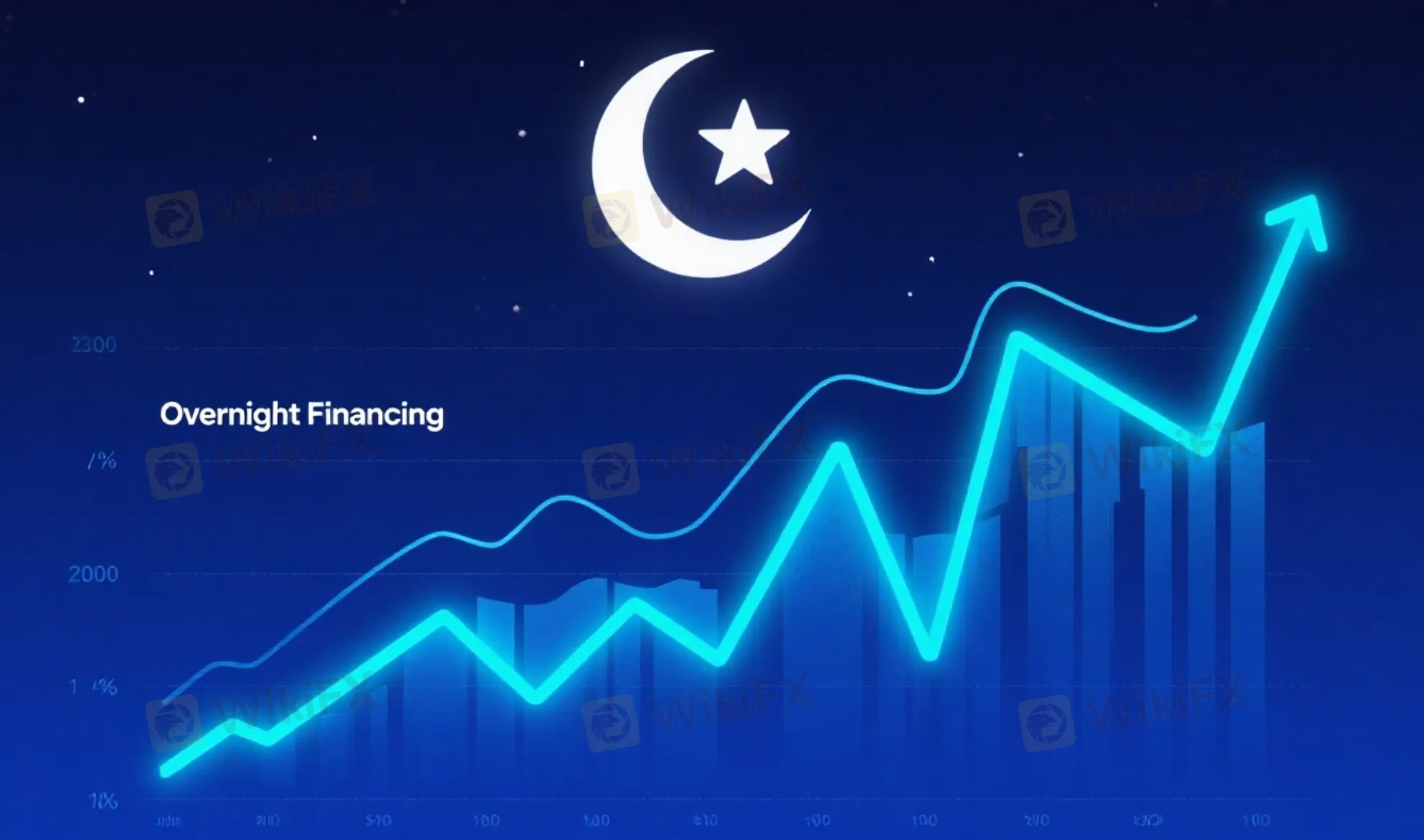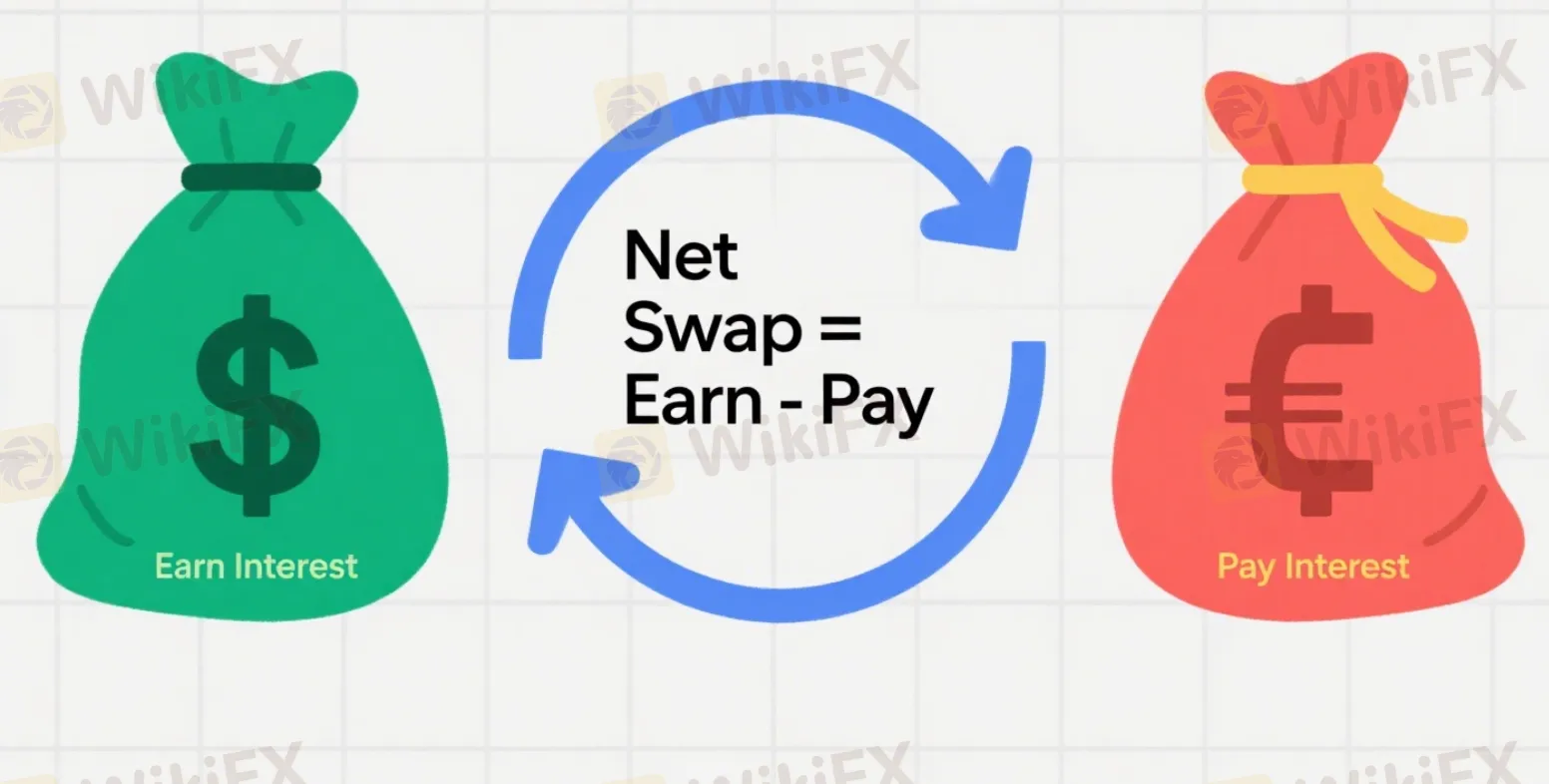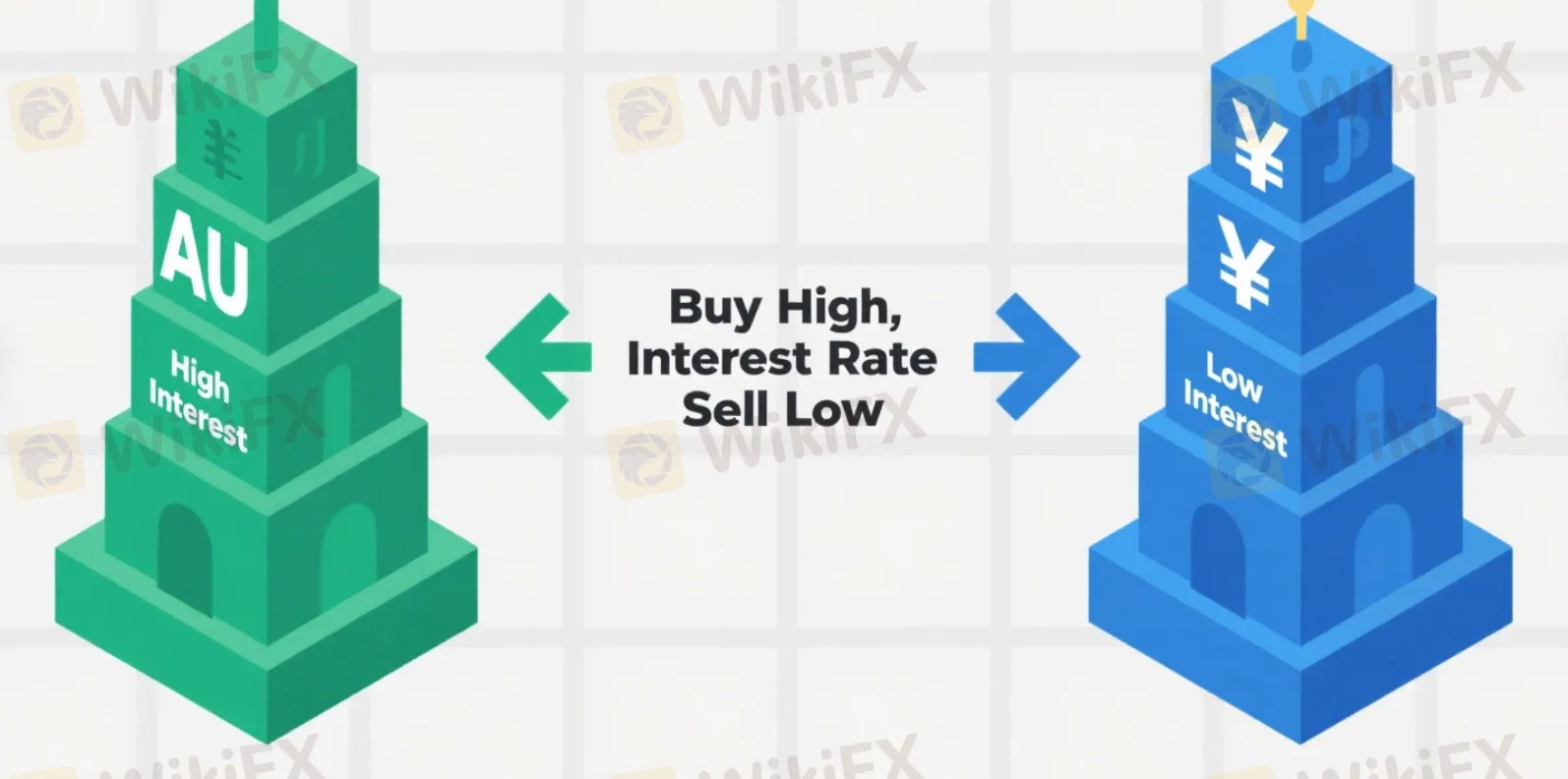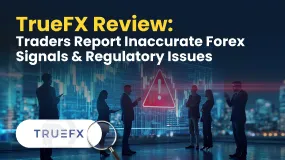Abstract:By understanding what swap is and how it's calculated, you're no longer at the mercy of an unknown fee. You can now actively manage this cost, factor it into your risk and trade management, compare brokers more effectively, and make more informed, professional trading decisions.
The Overnight Cost
Have you ever held a forex trade overnight? If so, you might have noticed a small charge or credit on your account the next day. That's a forex swap at work.

This trading element often goes unnoticed by newcomers. But it has a direct impact on the profitability of any position held for more than a day. Understanding this mechanism isn't optional. It's a fundamental part of risk management and strategic planning.
So let's answer the core question directly. What is swap in forex? Forex swap, also known as rollover or overnight interest, is the interest paid or earned for holding a currency pair position open overnight. It exists because every currency you trade has an interest rate attached to it. The swap is simply the net result of the difference between the two rates. It's the financial settlement that reconciles this interest rate difference for positions held past the daily market close.
In this guide, we will explain what is the swap in forex. We'll break down exactly how it works and explore the underlying mechanics. We'll show you how to calculate it for your own trades. We'll also discuss how to manage it strategically to protect and even enhance your trading returns.
Decoding The Core Mechanism
To truly understand forex swap, we need to look beyond the simple fee. We need to understand what drives it: central banking and interest rates. The swap isn't an arbitrary fee charged by your broker. It's a reflection of fundamental economic principles that govern global finance. When you understand the “why,” managing the “how” becomes intuitive.
The Why Behind Swap
Every currency in the world has an overnight interest rate attached to it. This rate is set by the country's central bank. For example, the Federal Reserve (Fed) sets rates for the U.S. Dollar (USD). The European Central Bank (ECB) sets rates for the Euro (EUR). These rates dictate the cost of borrowing that currency.
The core principle of a swap lies in the nature of a forex transaction. When you trade a currency pair, you perform two actions simultaneously. You buy one currency (the base currency) and sell another (the quote currency). For example, in a long EUR/USD trade, you're buying EUR and selling USD.
This means you should earn interest on the currency you own (the one you bought). You should also pay interest on the currency you've borrowed to sell. The forex swap is the net difference between these two interest payments.
Think of it like taking out a small loan in one currency to buy another. You have to pay interest on the loan (the currency you sold). But you earn interest on the currency you're holding. The swap fee reconciles these two actions at the end of the trading day.

Who Pays and Who Earns?
The direction of your trade determines whether you pay or earn the interest rate difference. Whether you're long (buying) or short (selling) matters. The rule is straightforward and applies universally.
For a long (buy) position, you're buying the base currency and selling the quote currency. Therefore, you'll earn the interest rate of the base currency and pay the interest rate of the quote currency.
- If Long (Buy) EUR/USD: You're long EUR and short USD. The swap calculation is based on the EUR Interest Rate minus the USD Interest Rate.
For a short (sell) position, you're selling the base currency and buying the quote currency. The logic reverses. You'll pay the interest rate of the base currency and earn the interest rate of the quote currency.
- If Short (Sell) EUR/USD: You're short EUR and long USD. The swap calculation is based on the USD Interest Rate minus the EUR Interest Rate.
The Broker's Role
Here's a crucial detail that often confuses traders. The swap rate you see on your trading platform isn't just the pure interest rate difference between two central banks. Brokers act as facilitators of these overnight positions. For this service, they add a small administrative fee or mark-up to the swap rate.
This broker mark-up is the primary reason why you might find that both the long and short swap rates for a single currency pair are negative. Even if the interest rate difference suggests you should earn a positive swap, the broker's fee can reduce that credit. It might even turn it into a small debit. This is standard industry practice. It's a key part of how brokers manage their own financial exposure and operational costs.
Positive vs. Negative Swap
Now that we understand the mechanics, we can see how two distinct outcomes are possible when you hold a trade overnight. You can either earn a small credit or incur a small cost. This distinction is known as positive swap and negative swap. Knowing which one applies to your trade before you enter is key to planning. This is especially true for longer-term trading styles.
What is a Positive Swap?
A positive swap is a credit added to your trading account for holding a position overnight. This desirable scenario occurs when the interest rate of the currency you're buying is significantly higher than the interest rate of the currency you're selling. After accounting for the broker's mark-up, there's still a net positive interest payment owed to you.
A classic example often involves pairs with a large interest rate difference. For instance, if you go long on a pair like AUD/JPY when the Reserve Bank of Australia's interest rate is substantially higher than the Bank of Japan's near-zero rate, you would likely earn a positive swap. You'd earn this for each night you hold the position. Traders actively seek these opportunities for a strategy known as the Carry Trade, which we'll discuss later.
What is a Negative Swap?
A negative swap is a debit, or charge, deducted from your trading account for holding a position overnight. This is the more common scenario for many retail traders. It occurs when the interest rate of the currency you're buying is lower than the interest rate of the currency you're selling. It also occurs if the interest rate on the purchased currency isn't high enough to cover both the interest on the sold currency and the broker's administrative fee.
For example, if you go long on EUR/USD when the U.S. Fed Funds Rate is higher than the ECB's main refinancing rate, you're buying a lower-yielding currency (EUR) and selling a higher-yielding one (USD). This results in a net interest payment owed by you, which is charged to your account as a negative swap.
The 3-Day Swap Case
One practical aspect of swap that often catches new traders by surprise is the 3-day swap, or “triple swap.” On a specific day of the week, typically Wednesday, the swap charged or credited to your account is for three days instead of one.
The reason for this is logistical. Forex trades settle two business days after the transaction date (T+2). A position held open past the market close on Wednesday will have a settlement date of Friday. If that position is held overnight into Thursday, the new settlement date jumps forward to the following Monday. To account for the interest over the weekend (Saturday and Sunday) when the forex market is closed, the swap for those two extra days is applied along with Wednesday's overnight swap. This triple charge ensures that the interest for every day of the week is accounted for.
How to Calculate Swap
Moving from theory to practice is essential. While the concept of interest rate differences is important, what a trader truly needs to know is the exact cost or credit they'll see on their account. Fortunately, brokers simplify this. You don't need to be an economist tracking central bank rates daily. Instead, you can use the swap rates provided directly by your broker to calculate the precise financial impact. This section provides a practical, step-by-step guide.
The Swap Calculation Formula
For retail traders, the most practical way to calculate the swap is by using the rate provided by the broker on the trading platform. These rates are typically quoted in “points” or “pips” per standard lot. The simplified formula looks like this:
Swap Cost/Credit = (Pip Value * Swap Rate * Number of Nights) / 10
Let's break down each component:
- Pip Value: This is the monetary value of a one-pip movement for a specific currency pair and trade size. For a standard lot (100,000 units) on most USD-quoted pairs (like EUR/USD, GBP/USD), the pip value is $10. This value changes based on your trade size (e.g., $1 for a mini lot) and the quote currency of the pair.
- Swap Rate: This is the critical number provided by your broker. It represents the overnight interest rate difference plus the broker's mark-up, expressed in points. You'll find separate rates for “Swap Long” (for buy positions) and “Swap Short” (for sell positions). It's important to note that this rate is specific to each currency pair and can change daily based on market conditions.
- Number of Nights: This is simply the number of nights you plan to hold the position open. Remember to account for the triple swap day (usually Wednesday).
A note on the formula: some brokers present their swap rates directly in the account's currency per lot. In that case, the calculation becomes even simpler, as we'll see below. The key is to understand how your specific broker presents the data.
A Worked Example
Let's walk through a real-world scenario you might encounter. We want to calculate the swap for holding a short position of one standard lot of EUR/USD overnight.
First, we need to gather the necessary data from our trading platform.
1.Gather the Data:
- Trade: Short 1 Standard Lot of EUR/USD (100,000 units)
- Account Currency: USD
- Pip Value (for a standard lot of EUR/USD): $10
- Broker's Swap Rate (Short): Let's assume we find a rate of +2.0 points on our platform. This is a hypothetical but realistic rate.
- Number of Nights: 1
2.Apply the Formula:
- Swap = (Pip Value * Swap Rate * Number of Nights) / 10
- Swap = ($10 * 2.0 * 1) / 10
- Swap = $2.00
In this example, holding a short position of one standard lot of EUR/USD overnight would result in a positive swap, or a credit of $2.00 to our trading account.
A More Direct Calculation
Many modern trading platforms make this even easier. They often quote the swap rate not in points, but directly in the account's currency per standard lot.
For example, you might look at the specifications for EUR/USD and see:
- Swap Long: -6.50 USD
- Swap Short: +2.00 USD
This means the broker has already done the calculation for a 1.0 lot trade. The calculation for the trader is then incredibly simple:
Total Swap = (Swap Rate in Currency per Lot) * (Your Trade Size in Lots)
Using our previous example of a short 1 lot EUR/USD position:
- Total Swap = (+2.00 USD) * (1 lot)
- Total Swap = +$2.00
If you were trading a mini lot (0.1 lots):
- Total Swap = (+2.00 USD) * (0.1 lots)
- Total Swap = +$0.20
This direct method is the most practical way for a trader to quickly assess their overnight costs. The only task is knowing where to find this information.
Where to Find Swap Rates
This information is readily available on your trading platform. For MetaTrader 4 (MT4) or MetaTrader 5 (MT5), the process is simple and standardized.
1.Open your trading platform.
2.Locate the “Market Watch” window, which lists the currency pairs.
3.Right-click on the currency pair you're interested in (e.g., EUR/USD).
4.From the context menu, select “Specification.”
5.A new window will pop up containing all the contract specifications for that pair. Scroll down until you find the entries for “Swap Long” and “Swap Short.”
This will show you the exact rates your broker will apply, allowing you to perform the calculations before you even place a trade.
Key Influencing Factors
Swap rates are not static. They're dynamic figures that change in response to global economic shifts and broker-specific policies. Understanding the forces that influence these rates can help you anticipate changes and make more informed decisions. Here are the primary factors at play.
1.Central Bank Monetary Policy
This is the single most important driver of swap rates. When a country's central bank adjusts its benchmark interest rate, it directly alters one-half of the interest rate difference equation for every pair involving its currency. A central bank's decisions to hike, cut, or hold rates are based on its mandate to control inflation and foster economic growth. Traders who follow central bank announcements can anticipate how swap rates might evolve. For instance, during 2022-2023, as the US Federal Reserve aggressively hiked rates to combat inflation, the interest rate difference between the USD and currencies like the JPY and EUR widened significantly. This directly impacted what is swap on forex, making long USD positions more attractive from a swap perspective and short USD positions more costly.
2.Broker's Administrative Fees
As we've mentioned, the pure interbank interest rate is not what you receive. Brokers add their own administrative fee or mark-up to the swap. This fee is not standardized across the industry and can vary significantly from one broker to another. Two different brokers can have noticeably different swap rates for the exact same currency pair at the same time. This is why it's always wise for long-term traders to compare swap rates as part of their broker selection process. This fee is a key component of the broker's business model.
3.The Specific Currency Pair
The characteristics of the currency pair itself play a role. Major pairs like EUR/USD or GBP/USD typically involve currencies from large, stable economies with relatively similar interest rate policies. As a result, their swap rates are often modest. In contrast, exotic currency pairs, which pair a major currency with one from a smaller or emerging economy (e.g., USD/TRY or EUR/ZAR), often have much larger interest rate differences. This can lead to significantly higher swap rates, both positive and negative. While this can present opportunities, it also comes with higher volatility and risk.
Strategic Implications
Understanding swap is more than an academic exercise. It's about gaining a strategic edge. Once you know how to find and calculate swap, you can move beyond simply accepting it as a cost and begin to actively manage it. For some traders, it can even become a source of profit. Here's how to incorporate swap into your trading strategy.
Strategy 1: The Carry Trade
The most direct way to profit from swap is through a strategy known as the Carry Trade. This is a long-term strategy where a trader deliberately seeks out a currency pair with a high positive swap and holds a position to collect the daily interest payments. The goal is to profit from the interest rate difference itself, in addition to any potential capital appreciation from the exchange rate.
To execute a carry trade, a trader would buy a currency with a high interest rate while simultaneously selling a currency with a low interest rate. For years, pairs like AUD/JPY (long) were popular for this. We must stress the risk involved: the carry trade is not a risk-free strategy. Experienced long-term traders look for these opportunities during periods of low market volatility. However, if the exchange rate moves sharply against your position, the capital loss can easily and quickly wipe out any profit earned from the swap. The primary risk in a carry trade is adverse exchange rate movement.

Strategy 2: Managing Swap Cost
For most swing and position traders, the primary goal is not to profit from swap but to manage it as a cost of doing business. A negative swap is a small but steady drain on a profitable trade and an accelerant on a losing one. Factoring this cost into your trade plan is a mark of a professional approach.
Here's some actionable advice:
- Calculate Your “Break-even” Horizon: Before entering a trade, calculate the daily swap cost. If your trade has a profit target of 100 pips and a daily negative swap equivalent to -1 pip, you know that every 10 days you hold the trade, your potential profit erodes by 10%. This helps you assess whether the trade's potential reward justifies the holding cost over your expected time frame.
- Avoid the Triple-Swap Day: If a trade is approaching its profit target on a Tuesday or early Wednesday, it might be prudent to close it before the market rollover. By doing so, you avoid incurring the triple-swap charge, which could be a significant portion of your final profit on a short-term swing trade.
Strategy 3: Account Selection
Finally, your understanding of swap should influence your choice of broker and account type. This is a crucial part of understanding what is the swap in forex from a practical, cost-saving perspective.
- Compare Broker Swap Rates: As we've established, swap rates are not uniform. If you're a long-term trader, it's worth the effort to compare the swap rates offered by several reputable brokers. A broker with more competitive rates could save you a substantial amount of money over the course of a year.
- Consider Swap-Free Accounts: Many brokers offer “Swap-Free” or “Islamic” accounts. These accounts are designed to comply with Sharia law, which prohibits the charging or earning of interest. In these accounts, the swap is eliminated. Instead, a flat administrative fee may be charged if a position is held open for a certain number of days. For traders whose strategy involves holding positions for weeks or months, a swap-free account can be a more predictable and potentially cheaper option, even if they're not trading for religious reasons.
Making Swap Work for You
The forex swap, or rollover fee, is an integral, non-negotiable part of the forex market. It's not an arbitrary fee but a mechanism rooted in the global system of interest rates. By reaching the end of this guide, you've moved from being a passive participant to an informed trader who can actively manage this element of trading.
Let's recap the most critical takeaways:
- Forex swap is the interest earned or paid for holding a position overnight, based on the interest rate difference between the two currencies in a pair, plus a broker's mark-up.
- A swap can be positive (a credit to your account) or negative (a debit from your account), and it's tripled on a specific day (usually Wednesday) to account for the weekend.
- You can find your broker's specific long and short swap rates for any currency pair directly on your trading platform, typically under the “Specification” menu.
- Understanding swap is crucial for managing the costs of long-term trades and can even be used as the basis for a profit-seeking strategy like the Carry Trade.
By understanding what swap is and how it's calculated, you're no longer at the mercy of an unknown fee. You can now actively manage this cost, factor it into your risk and trade management, compare brokers more effectively, and make more informed, professional trading decisions.











